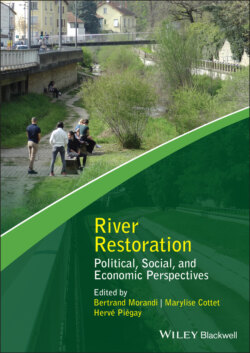Читать книгу River Restoration - Группа авторов - Страница 21
1.4.1 Understanding human–river interactions in the context of river restoration
ОглавлениеSince the first works published on human–river interactions in the context of restoration in the early 2000s (e.g. Tunstall et al. 2000; Connelly et al. 2002; Piégay et al. 2005), a significant proportion of the publications in the corpus have dealt with this theme (Figure 1.6). These contributions are most often part of a constructivist conception of nature that posits that the humans are a stakeholder in the elaboration of the reality in which they intervene; reality is seen as a mentally constructed representation (Moscovici 2001; Dunlap et al. 2002). The implications of this conception are important in the field of environmental action. Since the river is no longer considered as an intangible reality, it is necessary to make room for the plurality of the modes of understanding in order to define the objectives and modalities of action. This is all the more true in the field of restoration, where determination of the reference – which can be defined as an approximation of the desirable state of the river, a standard chosen from several possible alternative states (Le Floc’h and Aronson 1995) – appears to be an eminently subjective value‐laden activity (Hull and Robertson 2000); restoration is not only a scientific exercise based on rational criteria (Davis and Slobodkin 2004). Anchored in this epistemology, several research studies focused on the dynamics of human–river interaction within the framework of restoration projects.
Figure 1.6 A lexicon specific to international scientific publications dealing with human–river interactions in the context of restoration.
